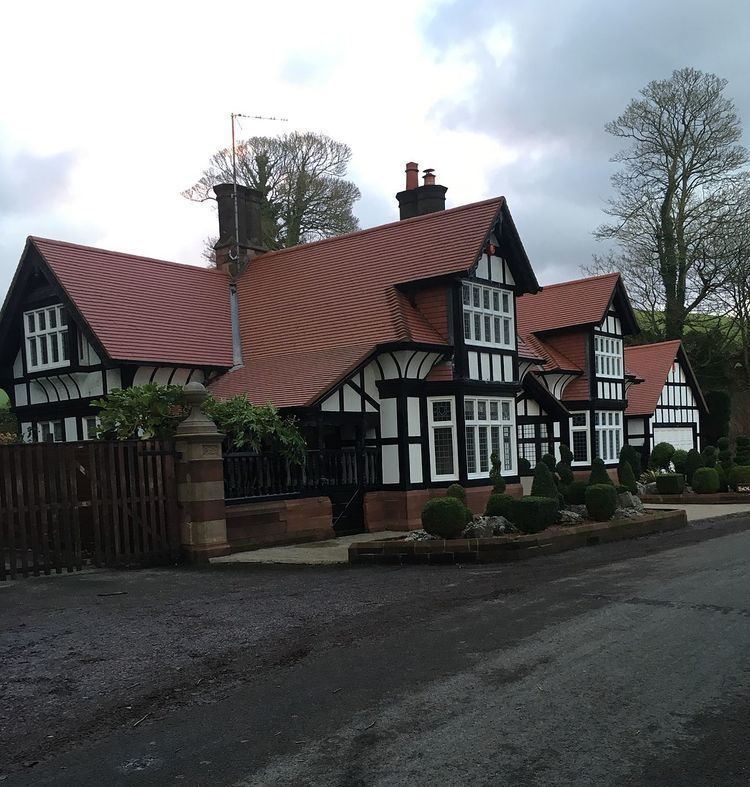 | ||
Abbot's Wood was a large country house located to the north-northeast of Barrow-in-Furness, Cumbria, England. It was sited on elevated ground to the northeast of Furness Abbey. The house was surrounded by extensive grounds with footpaths providing fine views.
Contents
History
The house was designed by the Lancaster architect E. G. Paley, and built between 1857 and 1859 for Sir James Ramsden. Ramsden was an industrialist who played a large part in running the Furness Railway, eventually becoming its managing director, and in the iron and steel and shipbuilding industry in Barrow-in-Furness. The Furness Railway contributed £2,000 (equivalent to £170,000 in 2015) towards its cost, although Brandwood et al. consider that it must have cost much more. The same authors also suggest that the house was used by the railway as a showpiece, and that clients would have been entertained there. In 1874 Paley's architectural practice drew up plans for an addition to the North Lodge on the estate, and in 1882 plans for a new morning-room for the house, which was built on its southeast corner. After James Ramsden's death in 1896, the house and estate passed to his son, Frederick, who did not marry, and who died in 1941. The house was used by the army during the World War II. Its condition then deteriorated, and it was demolished using dynamite in 1961 by Barrow Corporation. Some of the estate buildings were left standing, including four lodges, the home farm, and cottages, all of which had been designed by the Lancaster practice. The grounds of the estate are maintained as a Country Wildlife Site by the Cumbria Wildlife Trust.
Architecture
Abbot's Wood was a large complex building, incorporating elements of Gothic and Tudor architecture. There were many gables and roofs, and a square tower with a taller stair turret. Of the surviving estate buildings, three are recorded in the National Heritage List for England as designated Grade II listed buildings; two of the lodges and the home farm. The North Lodge, with its attached gatehouse and wing walls, is constructed in sandstone, and is in Gothic Revival style. The gatehouse has two storeys, with an archway in the lower storey. The upper storey contains a niche for a statue, which is flanked by a single-light window on each side. The single-bay gabled lodge to the right has a red tiled roof, and mullioned and transomed windows. The South Lodge is half-timbered on a sandstone plinth, and has a red tiled roof. It is in two storeys, the front being gabled with a decorated bargeboard. The windows are transomed casements, and there is a four-light oriel window on the left side. The Home Farm is built in sandstone with red tiled roofs. It consists of a cottage with a single storey and an attic, a shippon and calf house, a barn, pigsties, a stable, and a cart shed. These are all set in a U-shape around a courtyard.
